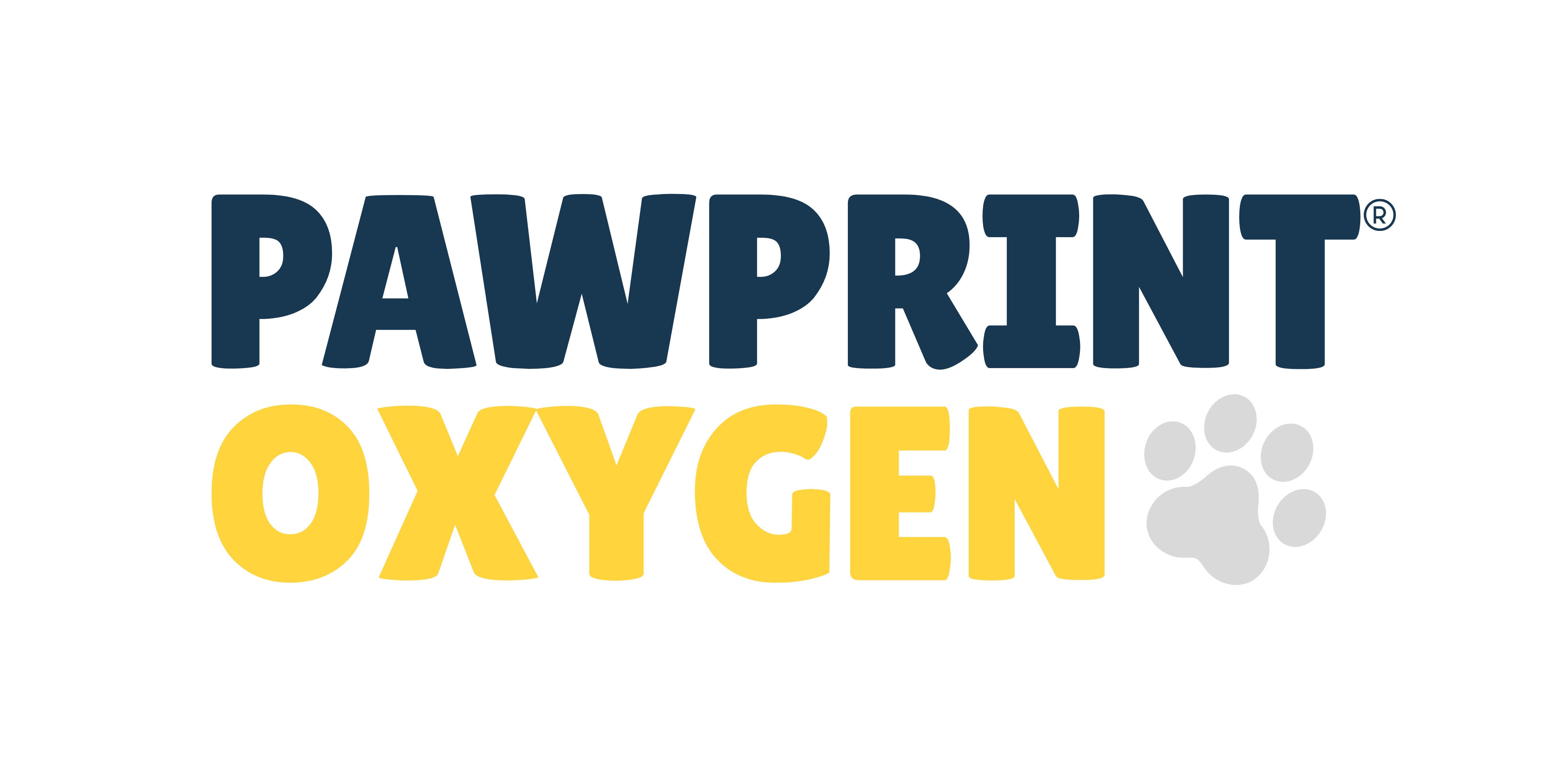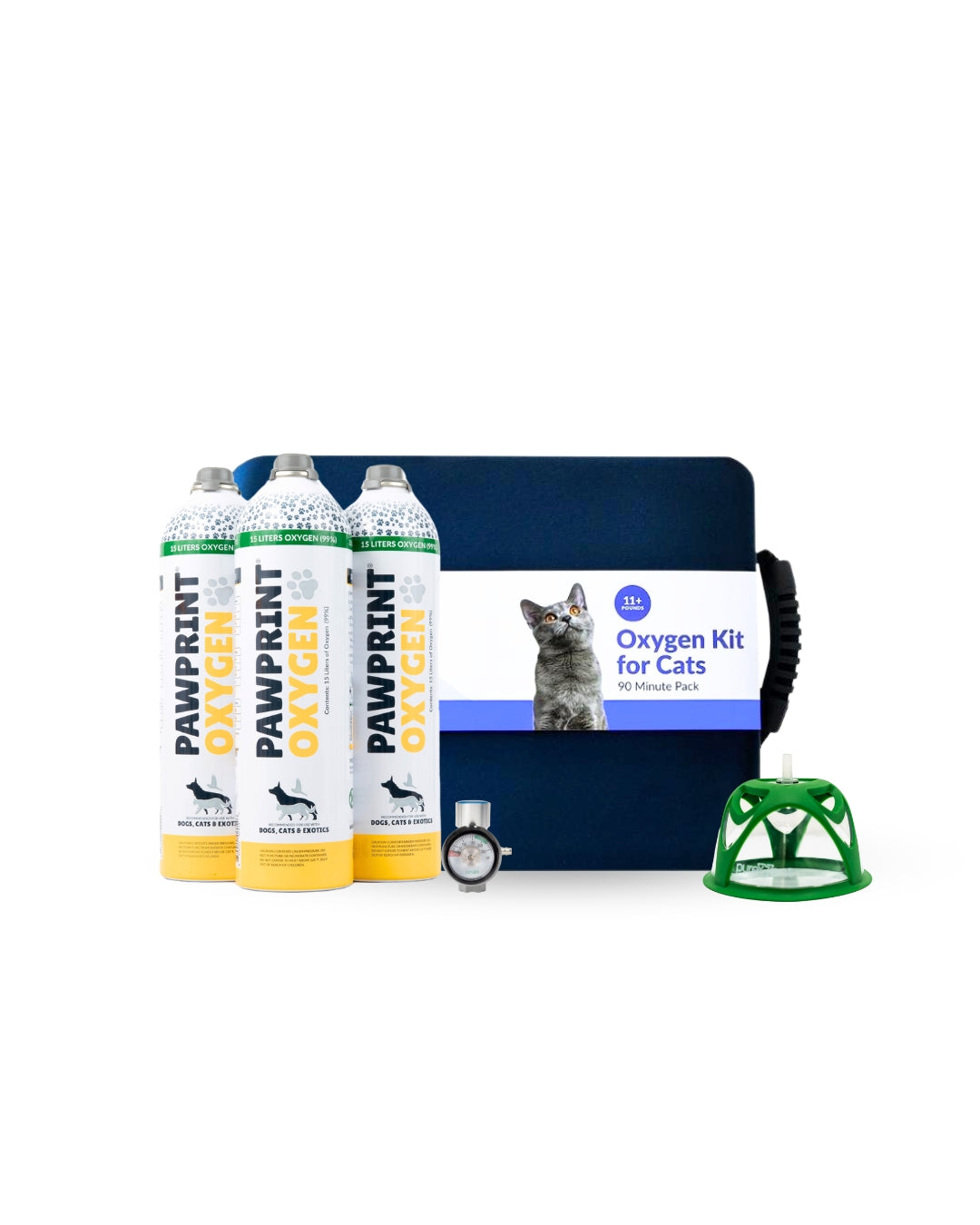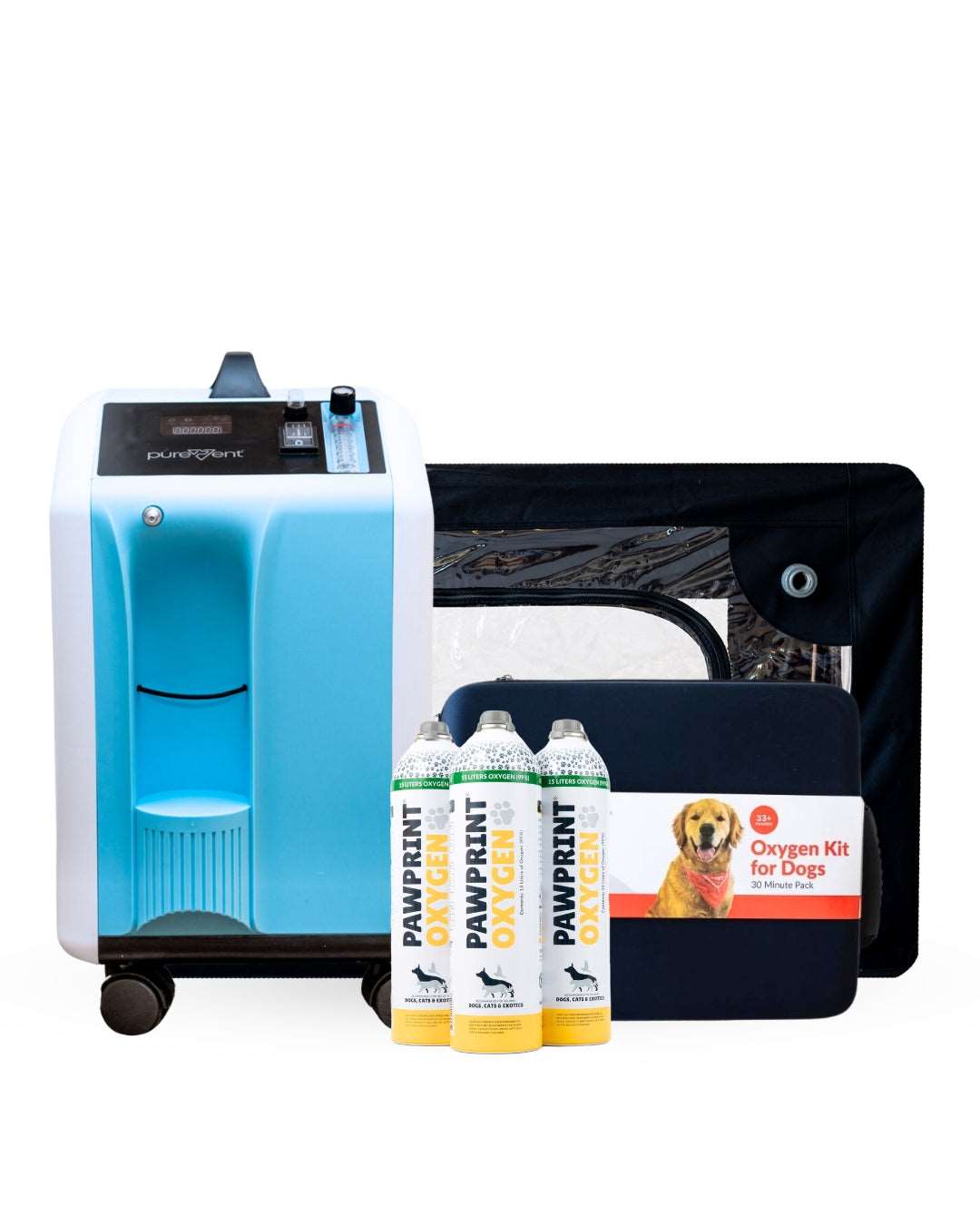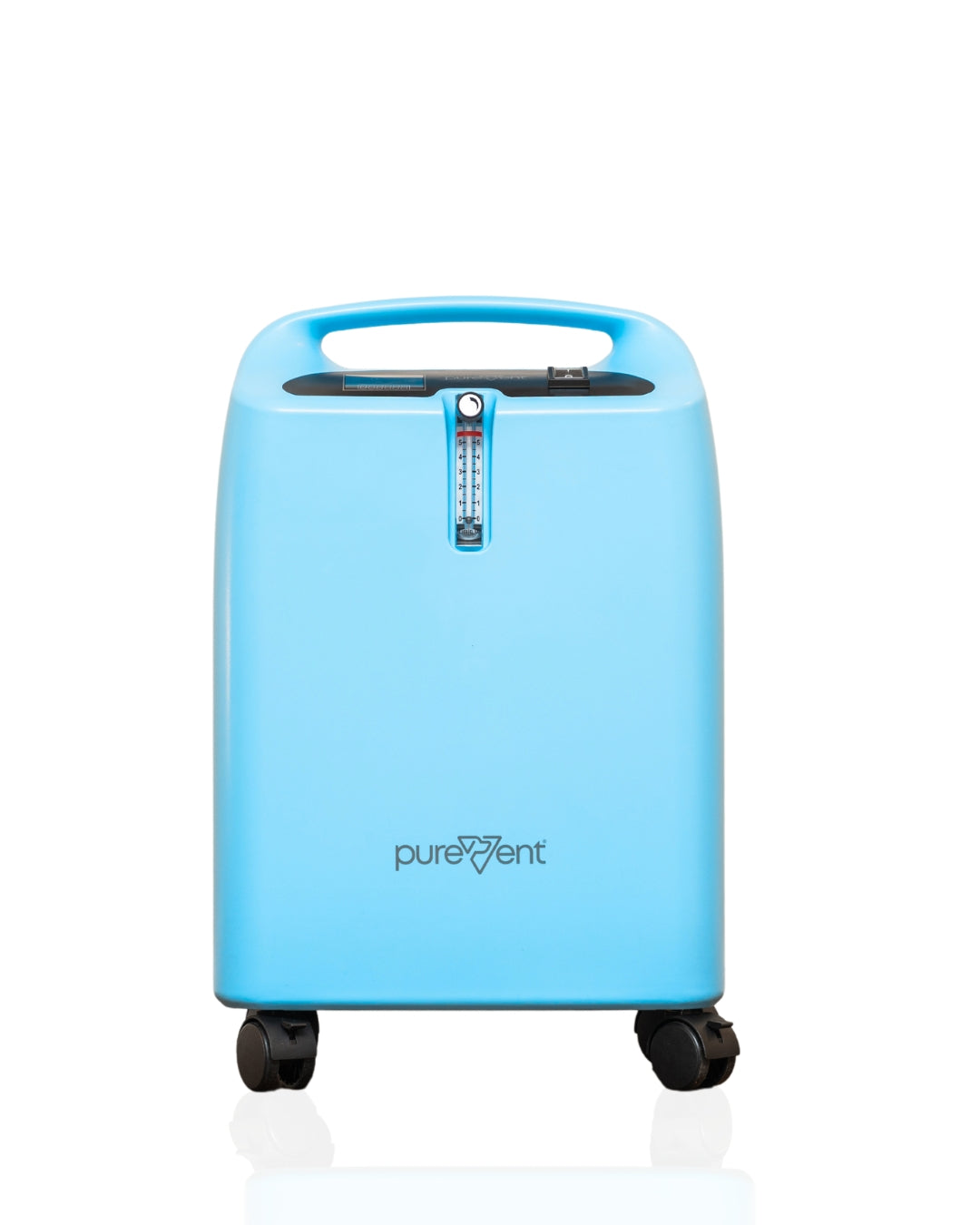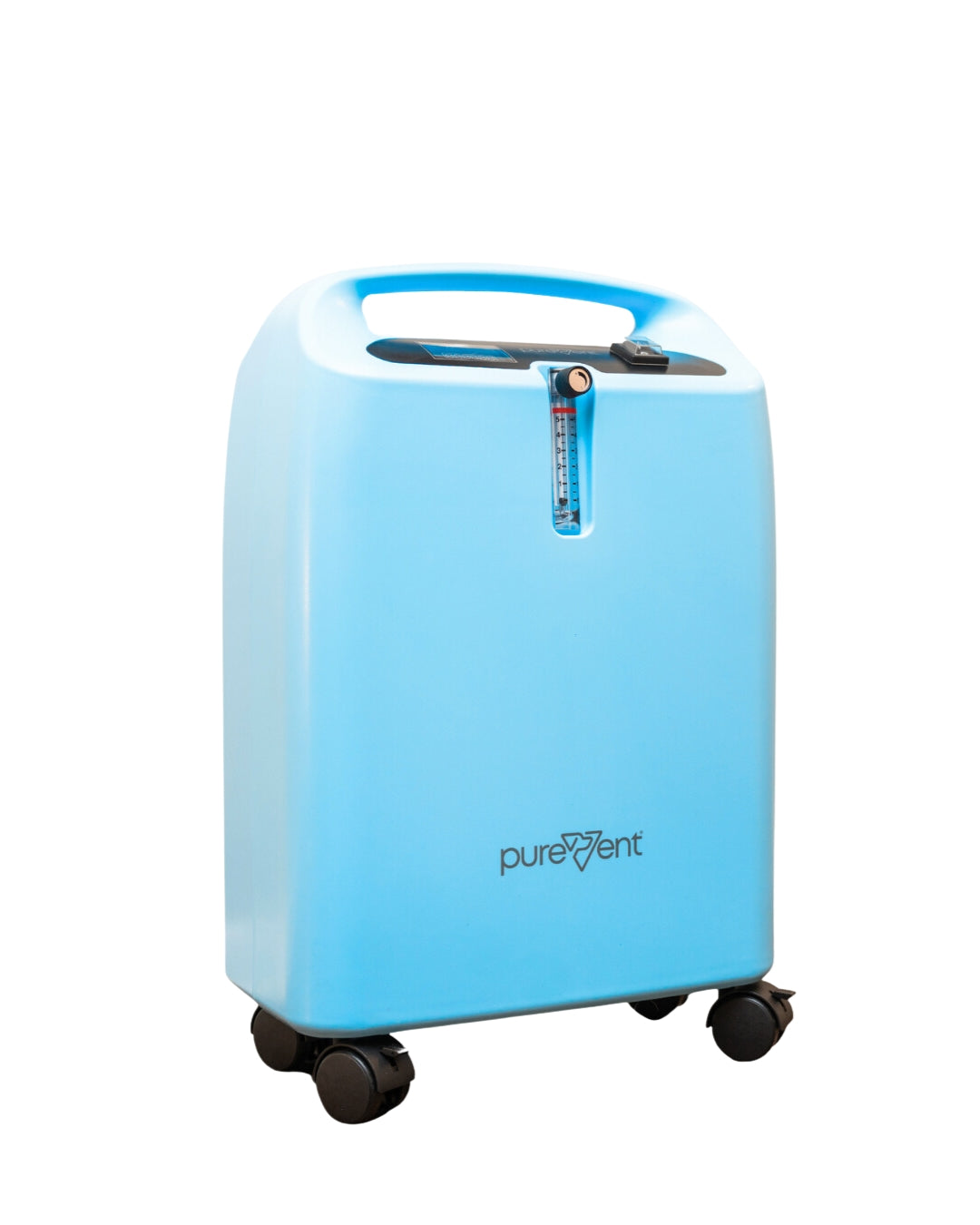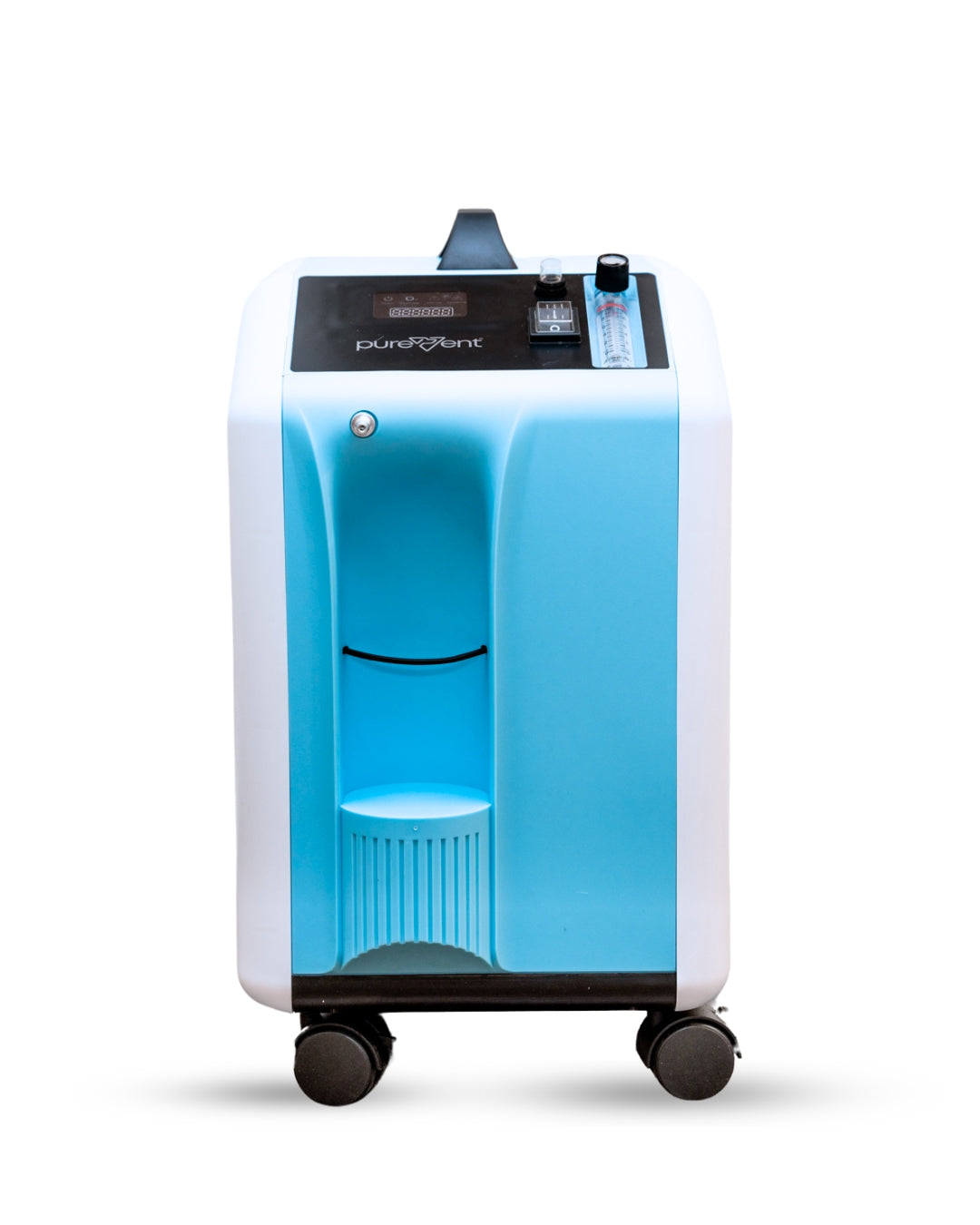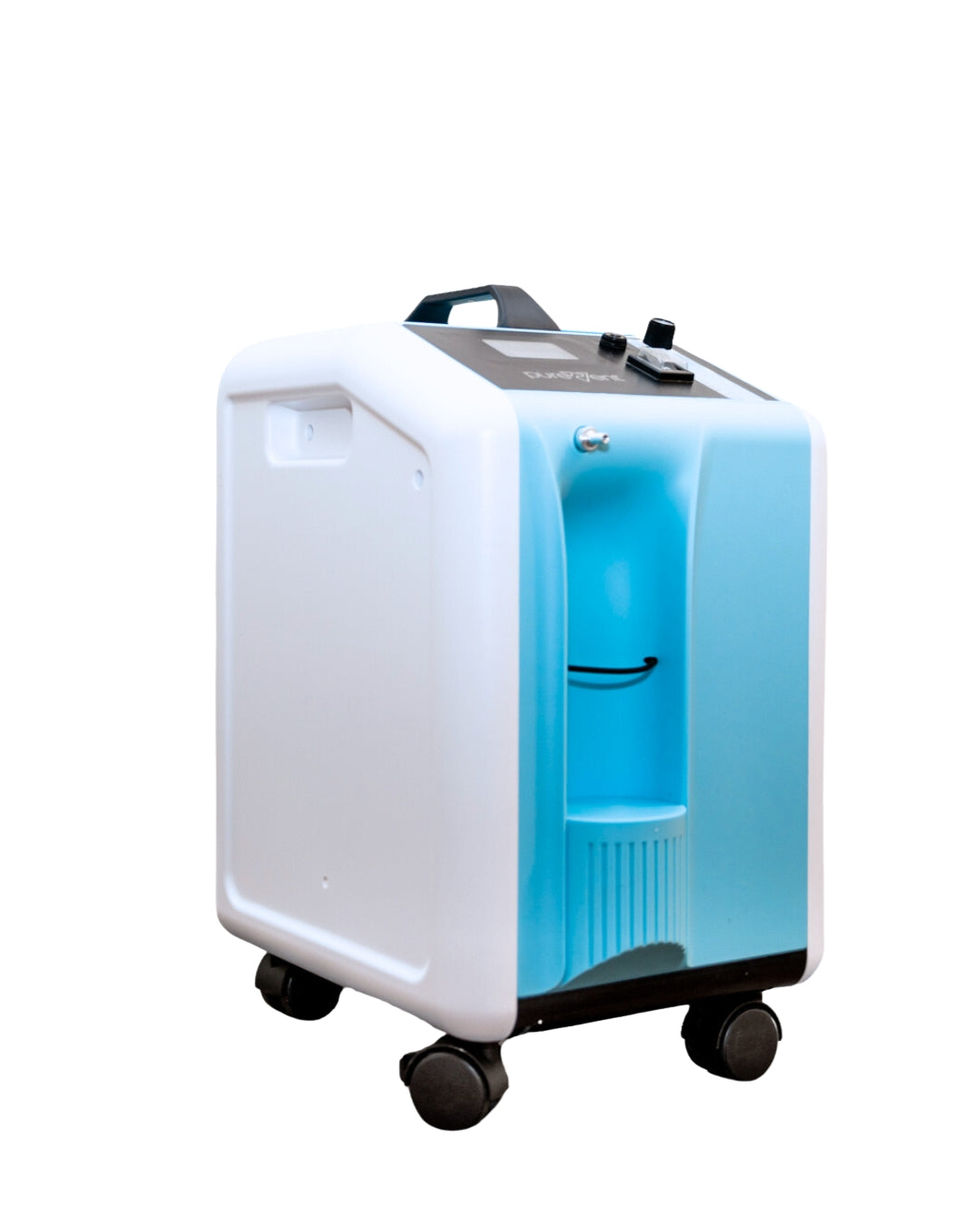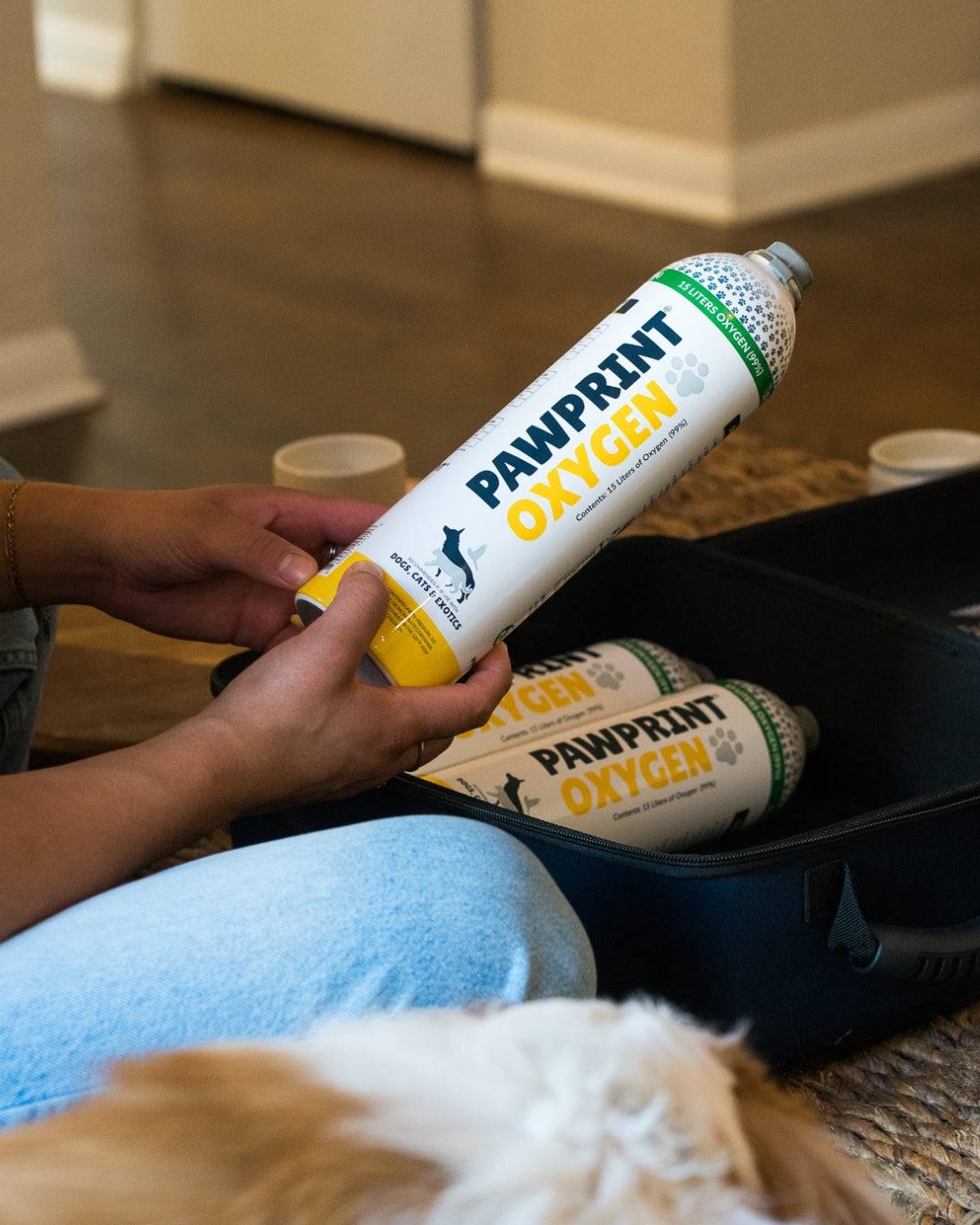Pathologies That Lead to Hypoxemia in Pets
Hypoxemia in pets, a condition characterized by low blood oxygen levels, can be caused by various pathologies. Respiratory diseases such as asthma, pneumonia, and chronic bronchitis can impair the lungs' ability to oxygenate blood. Cardiovascular conditions, including congestive heart failure and congenital heart defects, can reduce efficient blood circulation and oxygen delivery to tissues. Additionally, anemia and blood disorders decrease the blood's oxygen-carrying capacity. Other causes include trauma or injury leading to impaired lung function, neurological disorders affecting respiratory control, and conditions like pleural effusion or diaphragmatic hernia that physically restrict lung expansion. Identifying and addressing the underlying cause is essential for effective treatment of hypoxemia in pets.
There are a handful of basic pathologies that lead to hypoxemia:
- A decreased amount of oxygen in the environment
- Hypoventilation (not being able to get enough air in and out of the lungs)
- Some of the lung is filled or collapsed, preventing enough lung from participating in absorbing oxygen into the circulation (ventilation perfusion mismatch)
- Mixing venous and arterial blood with certain heart or circulation defects
- Thickening of lung membranes, which prevents oxygen from absorbing across these membranes
These pathologies, namely the first 3, are at play in a number of common conditions in pets and subsequently lead to respiratory distress. The table below categorizes specific conditions that can lead to hypoxemia in pets.
Common Conditions That Lead to Hypoxemia in Pets
|
Decreased oxygen in the environment
|
|
Hypoventilation (not able to move air in and out of lungs)
|
|
Not enough lung (ventilation perfusion mismatch)
|
In conditions like pneumonia, bruised lungs, and collapsed lungs, pets are hospitalized if they are oxygen dependent i.e. need oxygen to breathe comfortably while other treatments are instituted and the lungs heal or expand. The pet is sent home when they no longer need oxygen with the expectation of getting better and being “cured.” If a pet deteriorates while at home they can be supported with rescue oxygen while being transported to the primary care or emergency veterinary hospital for reassessment and further treatment.
In other conditions such as congestive heart failure (CHF), cancer, collapsing trachea, feline asthma, brachycephalic syndrome, laryngeal paralysis, etc...treatments exist but with the understanding that the condition is stabilized, not cured, and will either progress (as with CHF and cancer) or recur (as with the latter conditions). Oxygen again supports the patient until other treatments help the patient become non-oxygen dependent. Rescue oxygen can help the pet “arrive alive” at the veterinary hospital when these conditions deteriorate (which unfortunately they almost inevitably do) at home.
Dog Oxygen Rescue Kit
Our Oxygen Rescue Kits are designed to help your dog exactly when they need it. You can administer on-the-spot oxygen or oxygen in transport while on your way to emergency care. Dogs needing this rescue kit would likely suffer from more acute health conditions like seizures or be in a high-risk category that you'd like to keep a kit on hand to transport them with.
Rescue Oxygen not only helps to support the pet on the way to the veterinary hospital, but it can also be a part of a home treatment plan developed by the attending veterinarian. This may even prevent a trip to the veterinary hospital in the first place. Conditions that experience a dynamic obstruction such as collapsing trachea, laryngeal paralysis, brachycephalic syndrome, and feline asthma may benefit from home oxygen therapy. A dynamic obstruction is when the disease leads to a momentary blockage of the air pathway into the lungs-- nostril-- pharynx-- larynx-- trachea-- bronchi. This initial blockage creates a vicious cycle. By not being able to breathe, the pet breathes harder (also fueled by the associated anxiety of not being able to breathe). This causes even more of an obstruction leading to hypoventilation (not moving enough air in and out of the lungs). For example, if one collapses a straw when drinking a thick milkshake, sucking harder does not allow the milkshake to flow—one has to relax and then start again with less pressure!
During an episode of a dynamic obstruction, depending on the specific condition, drugs such as sedatives or bronchodilators coupled with oxygen can break this vicious cycle, returning the pet to their normal breathing. If it does not then rescue oxygen can be continued during transport to a veterinary hospital. Based on the underlying condition, history, distance to a veterinarian, comfort of the pet parent in administering medications etc., the attending veterinarian may develop a plan to attempt home treatment prior to transport.
Limitations of Oxygen Supplementation in Pets
Some patients and conditions will respond to oxygen better than others. For example, a total airway collapse that is not allowing any air in or out will not be helped by oxygen until the airway is secured through intubation; and if enough of the lung is not participating in respiration, a ventilator is needed. These are not home remedies and oftentimes the response to oxygen and other treatments is assessed prior to a veterinarian pursuing them, so administering oxygen is an appropriate first step but it sometimes may not be enough to address the underlying problem and resultant hypoxemia.
About Sean Smarick, VMD, DACVECC
Dr. Sean Smarick received his Doctor of Veterinary Medicine from the University of Pennsylvania in 1991. He then completed a residency in Veterinary Small Animal Emergency and Critical Care at the University of California, Davis in 2003 and, in the same year, became a Diplomat of the American College of Veterinary Emergency and Critical Care. In his 30 years of practice, Dr Smarick has enjoyed being in the ICU and emergency rooms of private and university practices, participating in CPR and clinical research, contributing to journals and textbooks, training residents and interns, and serving on the board of several veterinary businesses and organizations. Dr. Smarick currently serves as the Post-Cardiac Arrest Care Domian Chair of RECOVER , as a Trustee on the Board of the PVMA , and as a commissioned Veterinary Corps Officer in the US Army Reserves. In addition to providing local and national instruction to handlers, paramedics and veterinarians, he is involved in pre-hospital veterinary care as a member of the VetCOT ATLS and education committees, the K9 TECC working group , and on the board of NAVEMS.

